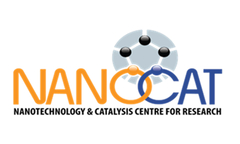TLM analysis of metal contacts for 2D MoS2 nanoflakes deposited by chemical vapour deposition-free technique
DOI:
https://doi.org/10.22452/mnij.vol1no2.3Keywords:
2D, MoS, Nanoflakes, Chemical vapor depositionAbstract
In the past decade, two-dimensional (2D) nanomaterials are gaining significant attention due to their novel properties in electrical, optical, mechanical which are different from their bulk forms. Therefore, it becomes one of the most promising materials for sensing applications. However, to connect the 3D world with 2D materials require excellent communication links which is a contact that renders remarkable electrical properties and specifically 2D nanomaterials-based sensor has been suffering from high resistance and low sensitivity due to the loss caused by poor contact between the 2D nanomaterials and metal interface. This work explores the electrical properties of metal/2D contacts by the rectangular transmission line method (TLM). The critical resistance parameters such as sheet and specific contact resistance were determined by characterizing the current-voltage (IV) relation. The behavior of different metals (silver and gold) contacts to 2D MoS2 nanoflakes deposited on Si substrate by low-cost spray coating technique are observed. These metals are chosen based on the work function relative to the electron’s affinity, χ of MoS2. UV-Vis’s analysis is carried out to estimate the final concentration of MoS2 solution.
Downloads
References
L. Cui, J. Wu, and H. Ju, Electrochemical sensing of heavy metal ions with inorganic, organic and bio-materials. Biosensors and Bioelectronics. 2015: 63; 276-286.
Du, X.-L., et al., An electrochemiluminescence sensor based on CdSe@ CdS functionalized MoS2 and hemin/G-quadruplex-based DNAzyme biocatalytic precipitation for sensitive detection of Pb (ii). Analytical methods. 2018: 10(1); 51-58.
Z. Guo., et al., Simultaneous determination of trace Cd (II), Pb (II) and Cu (II) by differential pulse anodic stripping voltammetry using a reduced graphene oxide- chitosan/poly-l-lysine nanocomposite modified glassy carbon electrode. Journal of colloid and interface science. 2017: 490; 11-22.
Y. Sun., et al., Ultrathin two-dimensional inorganic materials: new opportunities for solid state nanochemistry. Accounts of chemical research. 2015: 48(1); 3-12.
O. Lopez-Sanchez., et al., Ultrasensitive photodetectors based on monolayer MoS2. Nature nanotechnology. 2013: 8(7); 497.
T.N. Walter., et al., Nickel diffusion into MoS2 and the effect of annealing on contact resistance. Materials Science in Semiconductor Processing. 2020: 107; 104850.
Y. Zhang., et al., Fermi-Level Pinning Mechanism in MoS2 Field-Effect Transistors Developed by Thermionic Emission Theory. Applied Sciences. 2020: 10(8); 2754.
A.K. Singh., et al., 2D layered transition metal dichalcogenides (MoS2): synthesis, applications and theoretical aspects. Applied Materials Today. 2018: 13; 242-270.
S. Walia., et al., Characterization of metal contacts for two-dimensional MoS2 nanoflakes. Applied Physics Letters. 2013: 103(23); 232105.
K.G. Zhou., et al., A mixed‐solvent strategy for efficient exfoliation of inorganic graphene analogues. Angewandte Chemie. 2011: 123(46); 11031-11034.
C.M. Hansen., Hansen solubility parameters: a user's handbook. CRC press. 2007.
J.N. Coleman., et al., Two-dimensional nanosheets produced by liquid exfoliation of layered materials. Science. 2011: 331(6017); 568-571.
G. Hu., Printable 2D Material Optoelectronics and Photonics, in Department of Engineering. 2017: University of Cambridge: 196.
A. Beal., J. Knights, and W. Liang, Transmission spectra of some transition metal dichalcogenides. II. Group VIA: trigonal prismatic coordination. Journal of Physics C: Solid State Physics. 1972: 5(24); 3540.
Y. Li., et al., Measurement of the optical dielectric function of monolayer transition- metal dichalcogenides: MoS2, MoSe2, WS2, and WSe2. Physical Review B. 2014: 90(20); 205422.
Y. Wang., et al., Van der Waals contacts between three-dimensional metals and two- dimensional semiconductors. Nature. 2019: 568(7750); 70-74.
R. Kappera., et al., Phase-engineered low-resistance contacts for ultrathin MoS2 transistors. Nature materials. 2014: 13(12); 1128-1134.

Downloads
Published
How to Cite
Issue
Section
License





